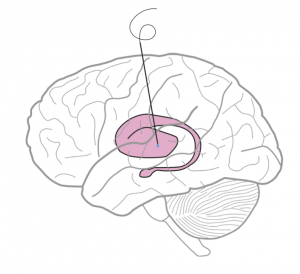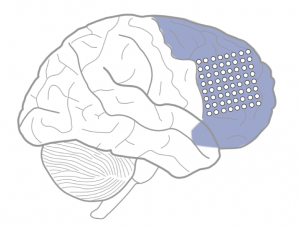We work with diverse patient populations that undergo neurosurgery for diagnosis and treatment. This encompasses patients undergoing:
- Electrocorticography or stereotactic EEG for the treatment of epilepsy
- Deep-Brain Stimulation for Parkinson’s Disease and other movement disorders
- Tumor resection

Deep brain stimulation (DBS) addresses certain neurological symptoms that result in movement disorders, most commonly symptoms of Parkinson’s disease, such as tremor, rigidity/stiffness and slowed movement. A neurostimulator – a battery-operated device similar to a heart pacemaker – delivers constant electrical stimulation through a single penetrating electrode. Impulses from the device block electrical signals that cause abnormal movements, giving patients the benefit of treatment without the fluctuating symptoms and adverse side effects of medication. DBS targets subcortical nuclei, allowing invasive access to deep brain areas such as striatum.

Electrocorticography (ECoG) and stereotactic EEG (sEEG) are used to record electric potentials of the brain with the goal of identifying seizure foci with great accuracy for posterior epilepsy surgery. Often, monitoring to capture abnormal epileptogenic signals is performed for days or weeks.
The localization of ECoG/sEEG electrodes is defined on clinical criteria, and therefore changes on a patient-by-patient basis, allowing access to multiple brain areas. Deep temporal lobe structures such as hippocampus and amygdala are common targets due to the prevalence of temporal lobe epileptic foci.